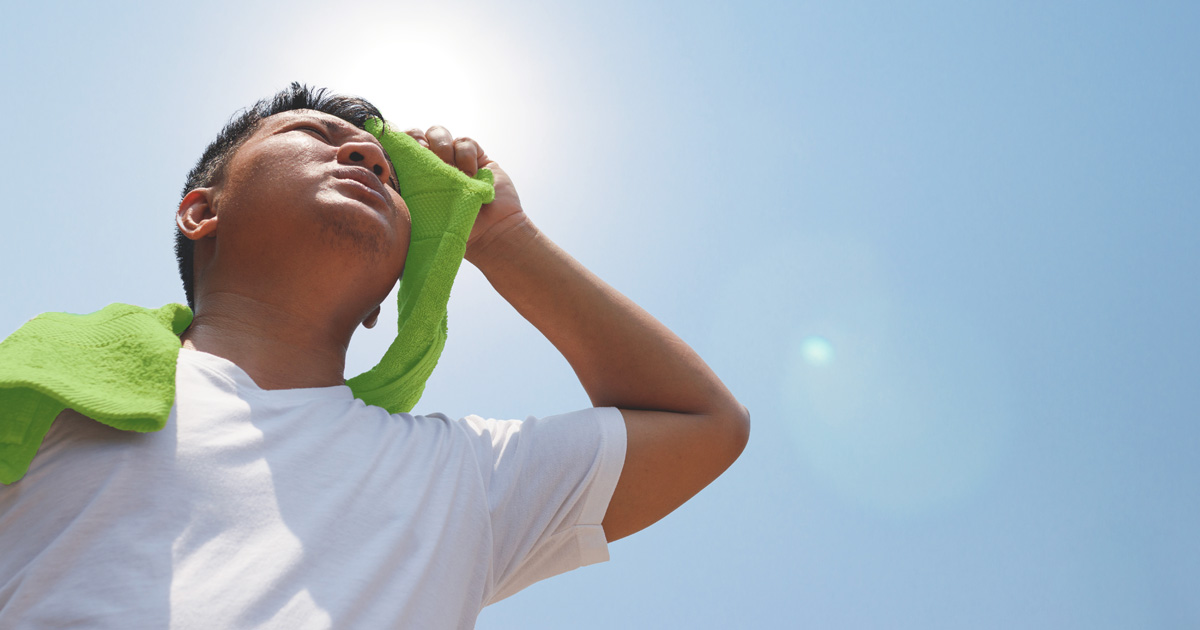
Summer brings many great things, from sunnier days to fun outdoor activities. But as we sweat more than usual, we have an increased risk of developing a heat rash – an itchy, uncomfortable rash that can quickly ruin a happy summer day.
While you’ve probably heard of heat rash before, do you actually know what it is? Do you know how to differentiate a heat rash from other types of rashes (such as hives or bug bites)? When is a heat rash just a sign that you need to get inside and cool down, or a more serious condition that requires medical care?
Here’s everything you need to know about heat rash, so you can keep your skin safe this summer.
Heat rash happens when sweat gets trapped under your skin and blocks your sweat glands. Hot and humid weather, having a fever or high body temperature, excessive sweating, and being overdressed can all cause heat rash. Infants are especially vulnerable since their sweat glands have not fully developed yet.
People who aren’t used to hot weather (which can be a big adjustment after cold Philadelphia winters) tend to get heat rash more easily. Overusing a heating pad can also lead to heat rash, whether you’re warming up during the winter or soothing aches and pains from the comfort of your air-conditioned home this summer.
What doesn’t cause a heat rash? Despite popular misconceptions, sunscreen is not to blame. The symptoms of a sunscreen allergy are frequently confused with heat rash, especially after spending a day in the sun.
Heat rash usually looks like a cluster of pimples or small blisters – which is why it’s so commonly mistaken for hives, bug bites, and the like. However, hives tend to spread rapidly across the body, and many bug bites rarely blister.
In addition to the bumps, you will likely experience redness and mild swelling as well. Most heat rashes last an average of 2-3 days.
You can get heat rash anywhere on your body, but it’s most likely to appear in folds or creases where skin touches skin (another big difference between heat rash and bug bites, since bugs prefer more exposed areas). Examples of these skin-on-skin areas include your:
For infants, heat rash typically develops on the neck, shoulders, chest, or back. Heat rash can also form in areas where clothing rests on your skin for a long period of time without enough airflow, such as the waistband.
Most heat rash symptoms are accompanied by an itchy, prickly feeling that can worsen if you continue to sweat. Some describe the feeling of heat rash as a mild “tingling” pain or “burning” sensation, although neither should be severe.
Yes, heat rash can spread to other areas of your body – however, it is not contagious and cannot be spread to other people. Heat rash tends to spread in areas where your clothing is tight against your skin, especially when you sweat.
Your first priority should be keeping your skin cool and dry, so you do not sweat and irritate the rash even further. While your heat rash is healing, we recommend that you:
Most people can treat mild heat rash on their own, but the licensed medical professionals at vybe are always here to help. Here’s a breakdown of your best treatment options:
Here are things to avoid as your heat rash heals:
To prevent heat rash from happening, it’s important to keep your skin as cool and dry as possible – especially during the summer. You can do this by:
You could experience severe symptoms from a heat rash, especially if you scratch the bumps and they break open. Visit your nearest vybe urgent care right away if:
All vybe urgent care centers have licensed medical professionals with a wide range of healthcare knowledge. We provide fast, convenient treatment and relief for most rashes, including heat rash and other heat-related illnesses.
When you need urgent care services, vybe makes great healthcare easy for all – just walk in or schedule an appointment at any vybe location. We’re open seven days a week with extended weekday evening hours, making it easy to get in, get out, and get back to your summer fun!
FIND YOUR VYBE